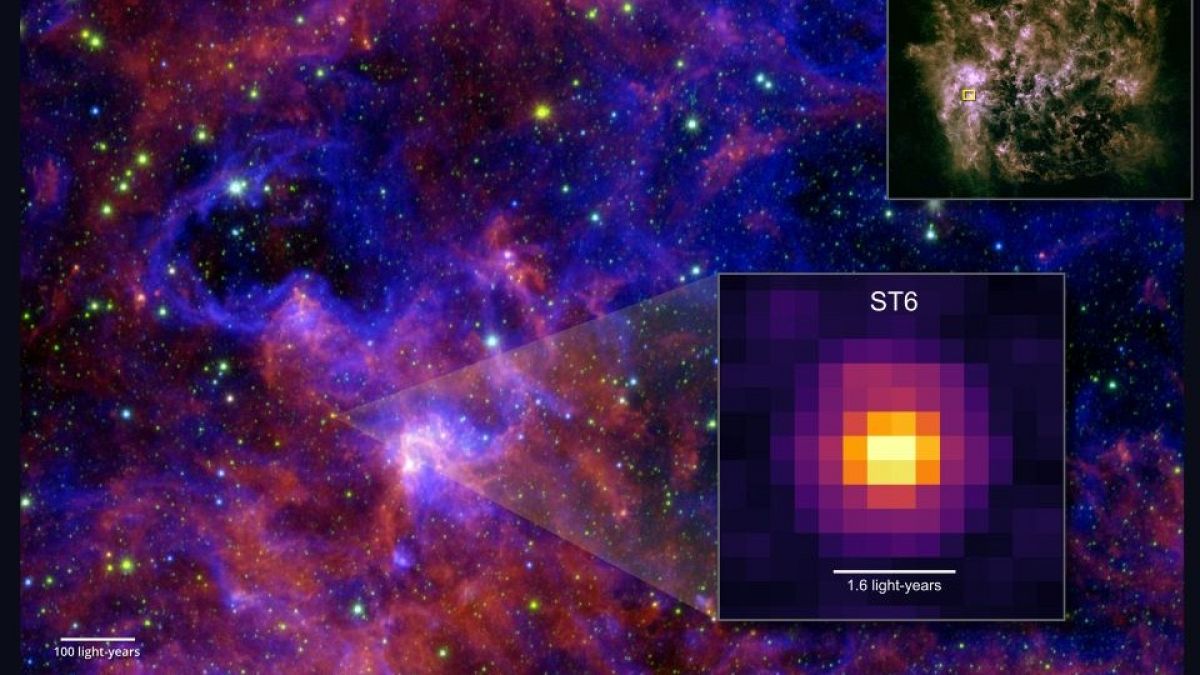Published on
23/10/2025 – 7:01 GMT+2
In an astonishing first for astronomy, researchers using the James Webb Space Telescope (JWST) have detected complex organic molecules – often called the “seeds of life” – outside our galaxy.
Launched in 2021 through a collaboration between NASA, the European Space Agency (ESA), and the Canadian Space Agency (CSA), the JWST is the largest, most powerful and most sophisticated telescope ever sent into space.
The discovery was made in frozen ice surrounding a young star, named ST6, in a distant galaxy. These molecules, which include known compounds like alcohols and vinegar’s main ingredient (acetic acid), are the building blocks of life on Earth.
What makes this finding especially remarkable is that the galaxy in question has far fewer heavy elements than the Milky Way and is exposed to intense ultraviolet radiation, creating a harsh environment where such molecules would normally struggle to survive.
How the discovery was made
The research team, led by University of Maryland scientist Marta Sewilo, used JWST’s powerful Mid-Infrared Instrument (MIRI) to peer into the Large Magellanic Cloud – our galaxy’s closest neighbour, about 160,000 light-years away.
Focusing on a massive cloud of dust and ice where new stars are forming, they spotted spectral signatures of several complex organic molecules, also known as COMs.
Among the molecules identified were methanol, ethanol, methyl formate, acetaldehyde, and acetic acid.
According to the researchers, this marks the first confirmed detection of ethanol, methyl formate and acetaldehyde in ice beyond the Milky Way, while acetic acid had never been “conclusively” seen in space before.
The team also found spectral features that resemble another ice COM – glycolaldehyde, a sugar-related molecule and precursor of more complex biomolecules, such as components of RNA.
Why it matters
The discovery is significant because it proves that COMs can form in extreme interstellar environments.
Co-author Will Rocha, from Leiden University in the Netherlands, said that COMs can form on interstellar dust grains in both ice and gas. Once formed, ice COMs can be released into the surrounding gas, and these reactions are likely the main way such molecules are produced in space.
“Our detection of COMs in ices supports these results,” Rocha said in a statement.
“The detection of icy COMs in the Large Magellanic Cloud provides evidence that these reactions can produce them effectively in a much harsher environment than in the solar neighbourhood”.
Sewilo added that studying COMs in the Large Magellanic Cloud is particularly valuable because its low metallicity – fewer heavy elements like carbon, nitrogen, and oxygen – is similar to galaxies in the early universe: “The harsh conditions tell us more about how complex organic chemistry can occur in these primitive environments where much fewer heavy elements like carbon, nitrogen and oxygen are available for chemical reactions.”
Although this doesn’t confirm that life exists elsewhere, the findings suggest that the building blocks of life could survive the formation of planetary systems and potentially seed early planets.
Sewilo hopes to expand the research to more protostars in both the Large and Small Magellanic Clouds to better understand how complex chemistry emerges in the universe.

